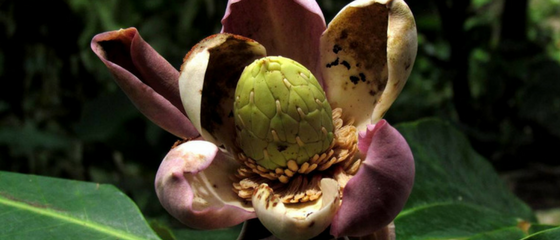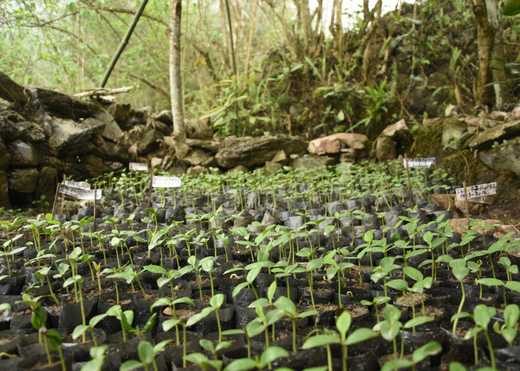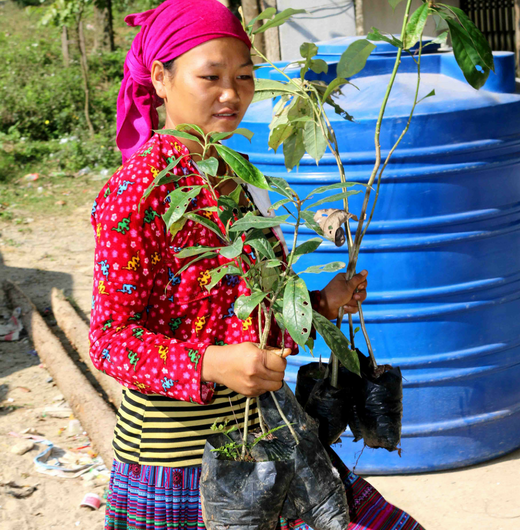Sowing the seeds of hope for critically endangered magnolia tree

In the limestone hills of northern Vietnam, villagers have been busy planting one of the world's rarest magnolias back into its natural habitat.
More than 1,100 seedlings from the critically endangered Magnolia grandis have been planted out by people from three villages in Ha Giang province, northern Vietnam. In a bid to save the species from extinction, seedlings were planted in community forests – areas of land protected by village regulations – and within plantations of cardamom.
Planting will help to boost the population size of the species which had fallen to fewer than 150 adult trees as a direct result of illegal logging and loss of the species' forest habitat to farming.
The work may also help to support the livelihoods of cardamom farmers as cardamom grows best in shade provided by moderate to high levels of canopy cover. Some farmers are looking to plant fast-growing species, like Magnolia grandis, to increase canopy cover and protect their crops from winter snowfall.
The planting of the magnolias is part of a larger Global Trees Campaign project managed by Fauna & Flora International's (FFI) Vietnam programme and the local NGO, Center for Plant conservation (CPC). The project is working with local villagers and the Forest Protection Department to better protect a variety of threatened tree species in the wild, including the Endangered Vietnamese golden cypress (Cupressus vietnamensis).

The recent planting represents a major milestone for the project and comes after three years of work dedicated to training local villagers to identify different species, monitor threatened trees, collect seeds and grow seedlings in local tree nurseries.
Hieu Nguyen, vice-director of CPC said, "The success of the project comes down to the trust and understanding we have developed with local people. By helping to establish local village nurseries, we have helped people to grow and replant a variety of trees that complement and add value to traditional ways of life."
FFI and CPC are now looking to build on this achievement by working more closely with cardamom farmers to better protect the remaining trees and scale up restoration work. The work will be carried out in tandem with a project to save the critically endangered Tonkin snub-nosed monkey, a primate endemic to northern Vietnam which shares the same habitat as Magnolia grandis.
FFI's Country Programme Manager in Vietnam, Lam Van Hoang, said, "Integrating threatened tree conservation into our conservation projects for critically endangered primates will create a win-win scenario for both local livelihood improvement and biodiversity conservation in an entire landscape. In addition to the major objective of conserving threatened tree species, planting magnolias will help to support recovery of critical primate habitat as well as sustainable cardamom cultivation."

Provided by Fauna & Flora International





















